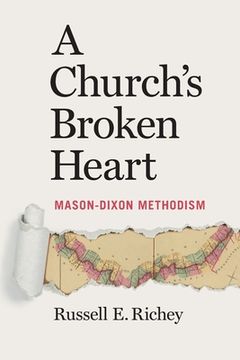Synopsis "A Church's Broken Heart: Mason Dixon Methodism (in English)"
How might United Methodism confront its continuing racial dilemmas and grasp how and why Methodism came to be so divided-organizationally, geo-politically, structurally, attitudinally-precisely where it proved most successful, namely in its heartland states stretching west from the Delmarva across middle America? From its late 18th-century landing on the Delmarva Peninsula, an initially anti-slavery Methodism advanced west across middle America, its circuit riders and class meetings welcoming into membership Blacks as well as Whites. In this border state homeland, Methodism went early into torment over slavery, retreated from its initial anti-slavery witness, suffered through several racially-inspired denominational schisms, and, in the major 1939 reunion, structured in sectional-racist denominational divisions (jurisdictions).Virtually all Blacks went into a national Central Jurisdiction. The five regional jurisdictions live on, dividing the church sectionally. Gradually, the Central Jurisdiction bled churches and ministers into one of the previously White jurisdictions. Jurisdictional sectionalism persists, however, discord now flagged on abortion and homosexuality. Further, racial separatism lingers, markedly and especially at the congregational level. The four selected states and their conferences exhibit Methodism's old and ongoing strains. In them the sectional racist spirit surfaced gradually in the period 1816-1876. In the 1844 Methodist Episcopal Church division over slavery, Ohio and Indiana marched with the MEC (north) and Tennessee and Kentucky with the MEC South. In the latter two, however, some anti-slavery sentiment persisted and in the two northern states considerable racism and some pro-slavery advocacy. Methodists invested significantly on both sides of the Civil War. The sectional and racial commitments, matured in the years studied, have stayed vibrant in two (now jurisdictioned) Methodisms. Understanding but not excusing our racial divides. How might United Methodism confront its continuing racial dilemmas and grasp how and why Methodism came to be so divided-organizationally, geo-politically, structurally, attitudinally-precisely where it proved most successful, namely in its heartland states stretching west from the Delmarva across middle America? From its late 18th-century landing on the Delmarva Peninsula, an initially anti-slavery Methodism advanced west across middle America, its circuit riders and class meetings welcoming into membership blacks as well as whites. In this border state homeland, Methodism went early into torment over slavery, retreated from its initial anti-slavery witness, suffered through several racially-inspired denominational schisms, and, in the major 1939 reunion, structured in sectional-racist denominational divisions (jurisdictions). Virtually all blacks went into a national Central Jurisdiction. The regional jurisdictions live on, dividing the church sectionally. Gradually, the Central Jurisdiction blended churches and ministers into one of the previously white jurisdictions. Jurisdictional sectionalism persists, however, discord now flagged on abortion and homosexuality. Further, racial separatism lingers, markedly and especially at the congregational level. The selected states and their conferences exhibit Methodism's old and ongoing strains. In them the sectional racist spirit surfaced gradually in the period 1816-1876, and anti-slavery sentiment persisted. Methodists invested significantly on both sides of the Civil War. The sectional and racial commitments, matured in the years studied, have stayed vibrant in now jurisdictioned Methodisms.

